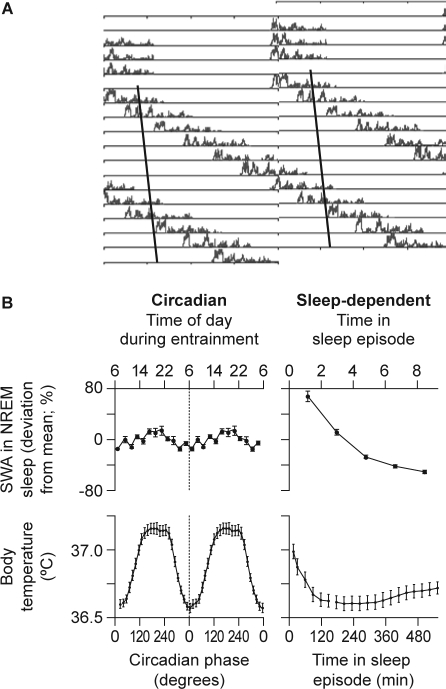Figure 2.
A: Time course of slow wave activity (SWA) during sleep episodes from a healthy subject during a forced desynchrony protocol. Data are double plotted, i.e., two consecutive 24-hour periods are plotted next to each other and below each other. The solid line represents the progression of the timing of the nadir of the core body temperature rhythm. Note that SWA declines in all sleep episodes, regardless of when the sleep episodes are initiated relative to the core body temperature nadir.27 B: Estimation of the circadian (left panel) and sleep-dependent (right panel) changes in SWA (upper panel) and core body temperature (lower panel) in 8 healthy subjects living in an environment free from time cues for 33–36 days and scheduled to a 28-hour rest–activity cycle.27 Note that while there is a robust sleep-dependent modulation of SWA, its circadian amplitude is very small, indicating that the SWA is not strongly modulated by circadian phase. NREM, nonrapid eye movement. Reproduced, with permission, from Dijk and Czeisler.27

